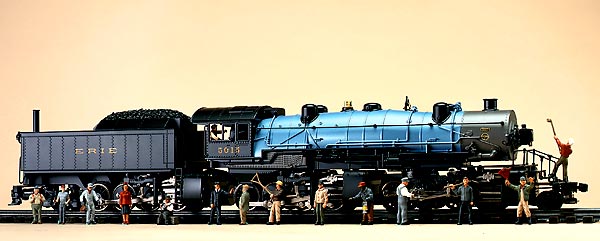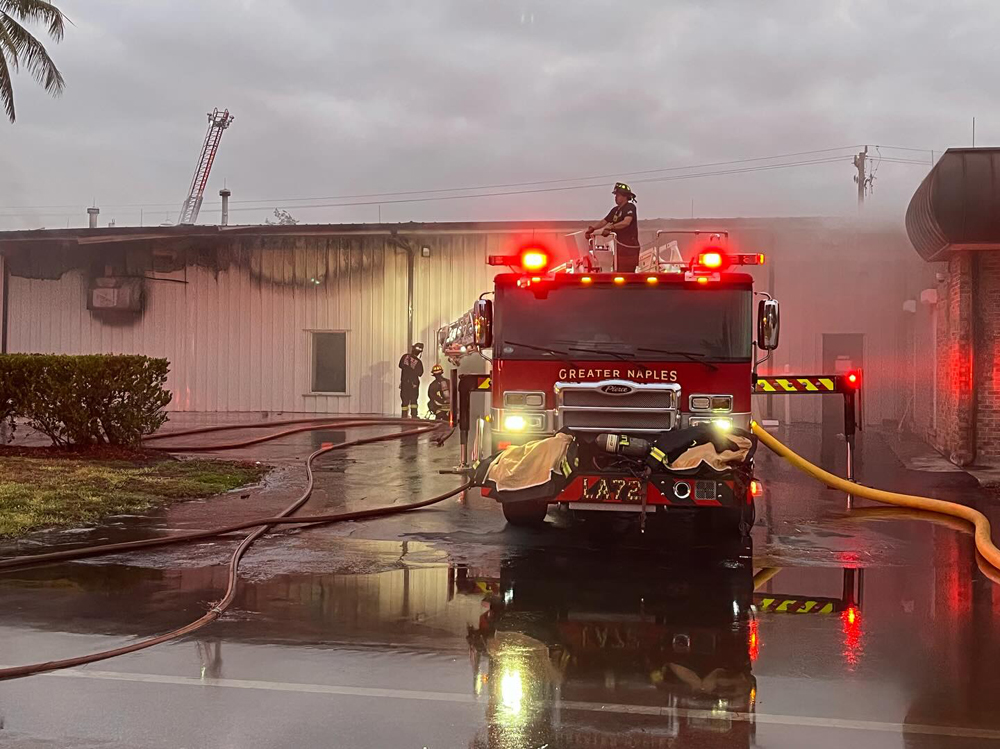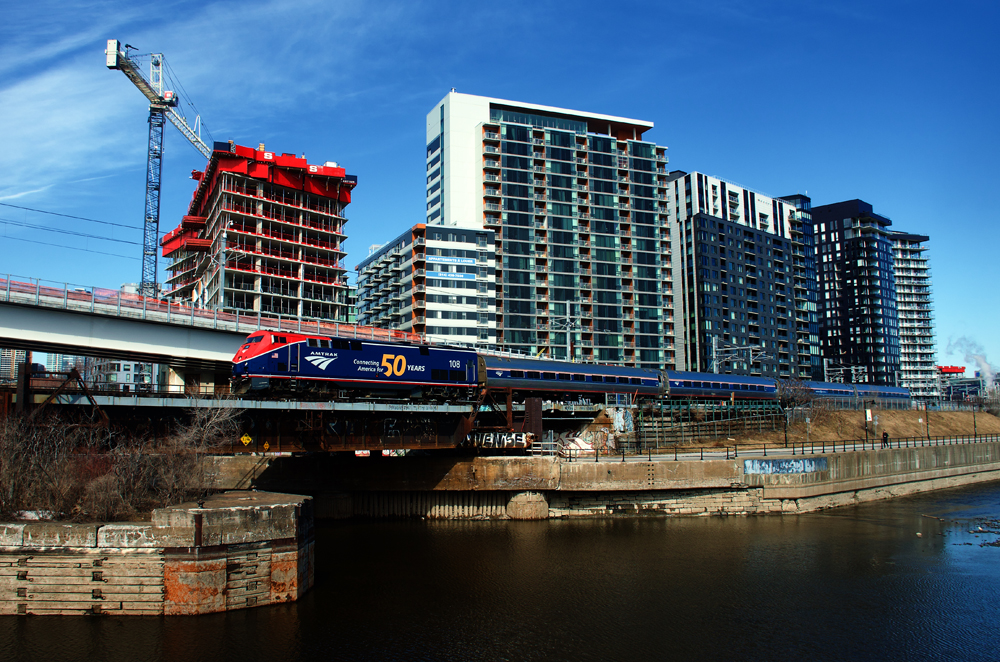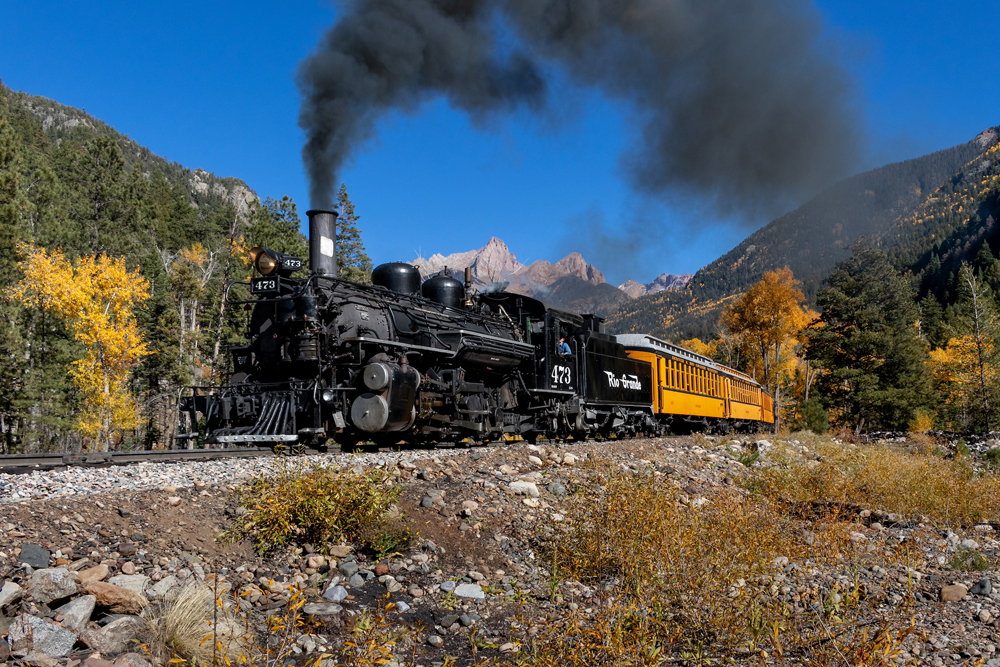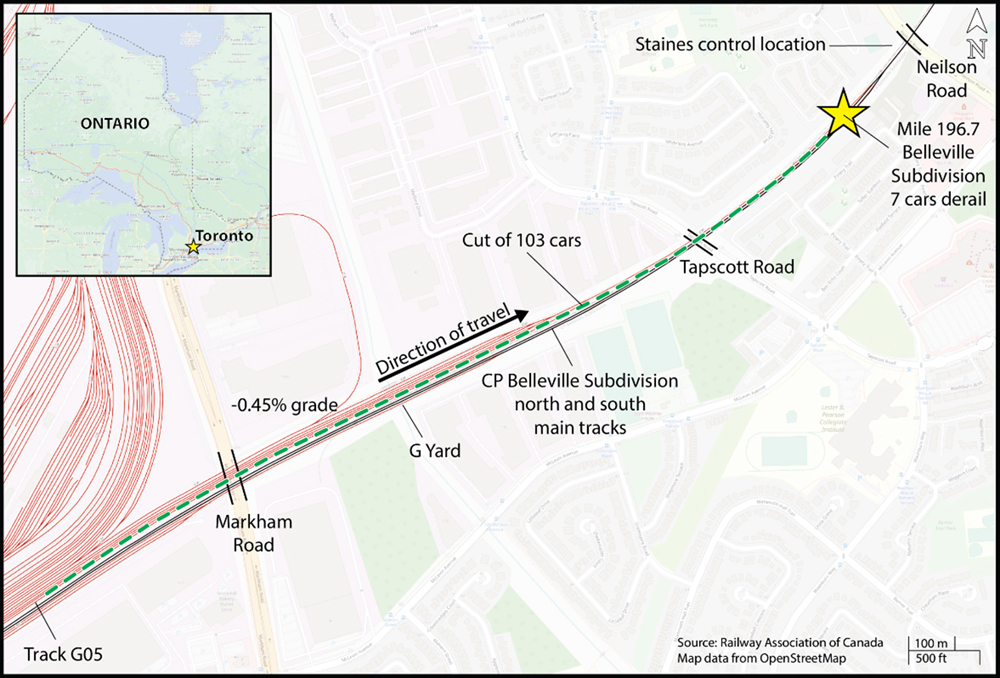A Baldwin Locomotive Works engineer created the Triplex to balance the costs (in men and machines) associated with helping heavy freight trains over mountain grades. It’s the same story that led to the creation of the 0-8-8-0, only it took place a few years later.
The Triplex, by using three sets of drive wheels and the weight of the coal bunker to assist traction, had 89 percent of its body weight available for adhesion (a 2-8-8-2 had only 65 percent available).
The Triplex’s wheel base measured 91 feet long but only 16 of those feet were rigid, classifying it as an articulated engine.
Erie ordered three of the locomotives from Baldwin, no. 5014 in 1914 and nos. 5015 and 5016 in 1916.
Equipped with a mechanical stoker, the Triplex demonstrated superb capability in a tonnage test. It pulled 250 loaded freight cars, plus a dynamometer car, at 14 mph up a .09 percent grade with a five degree curve.
Ultimately, the Erie’s experiment with the Triplex fell short. One Triplex engine could replace three out-of-service locomotives. But when one Triplex was out for repair, it equaled three engines pulled from regular duties. According to the book Erie Power, it wasn’t uncommon for two of the trio to be out of action at the same time for maintenance.
The Erie withdrew the three locomotives in 1927, scrapping no. 5014 in 1929, 5016 in 1930, and 5015 in 1933.
The Virginian ordered its own Triplex from Baldwin, a 2-8-8-8-4, receiving it in 1916. The locomotive’s performance was so disappointing that the Virginian cut it up into two road engines in 1920.
The model
What are the odds that we’d have two wild and wacky designs like the Angus and the Triplex up for review at the same time? Maybe I should buy some Megabucks lottery tickets.
This MTH engine is part of the RailKing line’s “Imperial” series. This new series offers a higher level of detail than traditional RailKing steamers but retains a smaller-than-scale size, allowing trains to negotiate tighter-diameter curves.
Don’t be fooled by the name, though, the RailKing Triplex can negotiate O-42 curves; while the previously released Premier line Triplex was, without a doubt, an O-72 locomotive.
Conceptually, this is a pretty complex toy. You have three sets of four-axle drive wheels. Two sets are under the boiler, each with its own can-style motor, and a third unpowered set is beneath the coal bunker that couples to the boiler. Part of me wants to re-classify this as a super tank engine, or a 2-8-8-8-2T!
The frames of the RailKing model measure 86 feet long in O scale (211/2 inches). The coupler-to-coupler length is 92 scale feet (23 inches), compared to the prototype’s 105 feet.
The pilot of the Triplex isn’t as intimidating as that on the Angus 0-8-8-0, but it still features a large stepped area bracketed by large steam chests. The smokebox door features a lantern-style headlight similar to that on the Angus.
The boiler is fairly clean, with good impressions of cast-in boiler bands. You’ll also find add-on piping and a grab rail running along the length of the boiler. Along the walks on both sides of the boiler are pipes and compressors.
The topside features four large sand domes and a smaller steam dome. Add-ons include a bell, a whistle, and pop-off valves. Though the four domes are not present on the prototype photo, the Guide to North American Steam Locomotives clearly shows Triplex no. 5016 with four sand domes after an overhaul in 1920.
The cab has unique cast-in detail, including some unusual steam piping (for the third set of steam chests below the cab). But the cab has no gauges with white faces and black dials. As seen in the photo on page 109, firebox glow and a cab light accent the two crew figures.
The tender, or coal bunker, rides on a set of driver wheels. It has a coal load of individual pieces, marker lights, and a large pipe for venting steam (and, according to one reference book, helping keep the sand used for the rear drivers dry!). Alas, on the RailKing model, exhaust blows out of the stack on the boiler but not out of the pipe on the tender.
As for that Russian blue boiler, read the 0-8-8-0 review for details.
On the test track
This locomotive, thanks to its bizarre appearance, is really fun to watch. It took me a minute or two to adjust to the fact that I was really, really looking at three sets of blazing side rods and 24 drive wheels kicking up dust!
We did experience a few close calls with clearance on the rear pilot. On your first run, take it through your layout slowly.
In our conventional-control mode testing, the locomotive’s low-speed average was 4.79 scale mph and the high-average was 58.4 scale mph. In DCS command-control mode, the best low speed we timed was 1.85 scale mph. Not shabby at all!
Drawbar pull for the 12-pound, 3-ounce locomotive was a hefty 3 pounds.
While there are certainly no audio recordings of the Triplex hanging around, the sound package, nevertheless, does a credible job of creating a multiple-cylinder atmosphere of solid, steam-powered noise!
The DCS functions, such as coil-coupler operation and sound effects, worked as advertised.
The fan-driven smoke unit was pretty potent. Worth noting is smoke output can be moderated by a rotary switch mounted on the locomotive’s underside.
I wouldn’t normally have been attracted to an odd-looking duck like the Triplex. But after having run our test sample for a month or so, it definitely goes to the top of my “when I win the Megabucks lottery” list.





